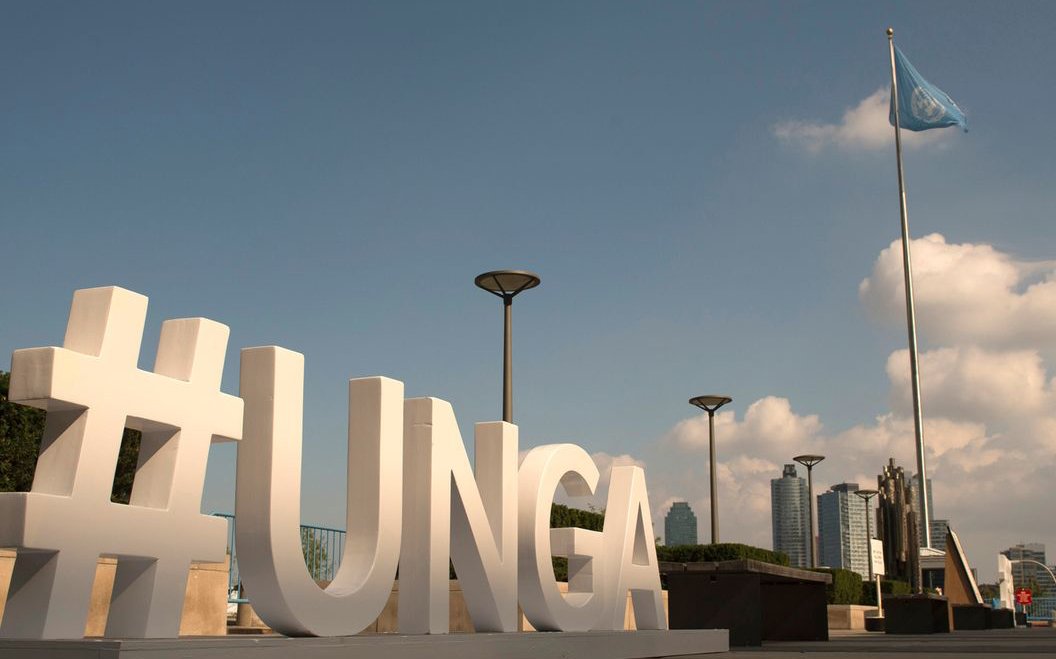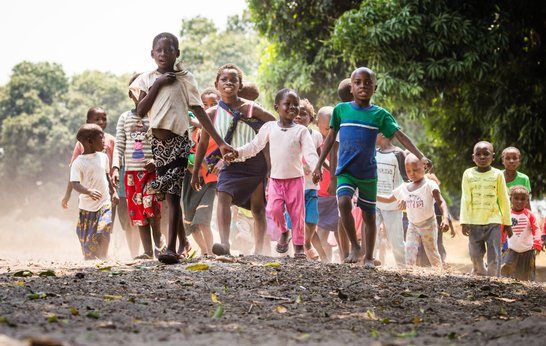Background
This week (18-23 September 2023) is the 78th session of the United Nations General Assembly (UNGA), a key event en-route to achieving the 2030 Agenda and putting the Sustainable Development Goals (SDGs) back on track.
The high-level week of the UNGA includes high-level meetings on Pandemic Prevention, Preparedness and Response (PPR), Universal Health Coverage (UHC), and Tuberculosis (TB) in addition to an SDG Summit, a High-Level Dialogue on Financing for Development, a Climate Ambition Summit and a Preparatory Ministerial Meeting for the ‘Summit of the Future’, appropriately taking place next year.
In this update, we focus on the Political Declarations adopted by UNGA on both PPR and UHC and what these mean for neglected tropical diseases (NTDs). On both texts, member states found it difficult to reach consensus on the final wording and the silence procedure on each was broken by a lack of agreement due to prevailing political issues such as Ukraine, the north-south divide highlighted by COVID-19, reproductive rights, and the current financial and economic crises amongst other issues.
Political Declaration on PPR
The Political Declaration on Pandemic Prevention, Preparedness and Response has finally been adopted by member states following lengthy negotiations. The 78-paragraph document outlines member states’ agreements and plans to prevent, prepare for, and respond to future pandemics.
The Political Declaration on PPR is different to the Pandemic Prevention, Preparedness and Response Accord which is also being negotiated by member states and is expected to be submitted for consideration by the 77th World Health Assembly in May 2024, and which is legally binding on states once ratified, unlike this Declaration. As such, negotiations on the Political Declaration have been conducted with one eye fixed on the Pandemic Accord negotiations.
Yet despite this lack of a binding nature, the Political Declaration falls short of what is required if the global community is to effectively prevent, prepare for and respond to future pandemics. While civil society organisations called for a strong declaration that was bold and action-oriented, the resulting text has left many hugely disappointed with only one real commitment in the text being made, and that being to convene another summit in 2026.
The final text of the Political Declaration disappointingly only contains one specific mention of NTDs, and that in a relatively generic paragraph and as part of a list of those with particular needs or vulnerabilities.
OP5. Address the particular needs and vulnerabilities of, inter alia, women, children, youth, persons with disabilities, people living with HIV/AIDS, tuberculosis, malaria and neglected tropical diseases and other communicable diseases, non-communicable diseases, older persons, migrants, refugees, internally displaced persons, People of African Descent, Indigenous Peoples, and those who are vulnerable or in vulnerable situations, which may include assistance, health care, mental health and psychosocial support, without any discrimination and with informed consent, in accordance with relevant international commitments, as applicable, and in line with national contexts and priorities.
While that is frustrating, especially when we recall how NTD systems played a major role in responding to COVID-19, there are a number of paragraphs that have relevance to NTDs and other communicable diseases including on financing, the continued emergence and re-emergence of epidemic-prone diseases, on WASH, and the need to remove trade barriers, and strengthen supply chains and diversify manufacturing capacities etc.
While the link between NTDs, COVID-19 responses, and PPR is clear, unfortunately there is little of real substance in this Declaration. It is well-known that without strengthening the systems used to combat NTDs, no country will be able to detect, prevent, prepare and respond to future pandemics. For example, existing NTD surveillance systems (including data, diagnostics and labs) can be used to detect pandemic-potential diseases. In many rural and isolated communities, NTD control and elimination programmes are the only health services available. The experience gained from these already embedded ‘last mile’ programmes can be utilized to support national responses to future pandemics.
The text does, however, recognise the importance of strengthening the primary health care system and the need to make it more resilient, and notes that primary health care and community-led health services should be high quality, safe, comprehensive, integrated, accessible, available and affordable for everyone and everywhere, including those who live in remote geographical regions or in areas difficult to access.
Importantly, the Declaration mentions the need to raise the level of preparedness to include the need to enable rapid diagnostics of drivers of outbreaks in animals of zoonotic potential, surveillance and early warning systems, to have the earliest and most adequate response to any outbreak that may arise and recognizes the necessity of a One Health approach.
However, the text makes no mention of our recommendations to acknowledge that new investments in PPR need to prioritise investments in existing diseases with pandemic potential, such as NTDs, and that financing for existing endemic health issues is maintained and not reallocated to health emergencies.
Nor does the text recognise the importance of expanding existing NTD surveillance systems to capture new and emerging diseases by urging member states to strengthen and expand existing disease surveillance systems, especially on NTDs targeted for eradication, to strengthen community-based data collection and information-sharing practices and widen them to integrate surveillance for new and emerging diseases.
Moreover, and crucially, the text also failed to provide specific commitments on funding for PPR let alone recognise the fact that many countries are facing serious challenges mobilising resources for health due to the prevailing economic climate exacerbated by the crippling debt crisis.
We wait to see what will come from the Pandemic Accord and hope that these issues will be addressed there. Regardless, we will continue to advocate for NTDs to be part of pandemic prevention, preparedness and response.
Political Declaration on UHC
The much anticipated and debated 2023 Political Declaration on Universal Health Coverage has been adopted by member states. Given that we have seen little progress on UHC since the previous declaration and have not achieved the targets set in 2019, this was a fundamental point for concrete actions to deliver health for all by 2030.
Unfortunately, similar to the Declaration on PPR, the Political Declaration on UHC fell short of this aim. It lists out early in the declaration how far off target we actually are - including that 1.65 billion people still require treatment for NTDs - and yet its 109 paragraphs will leave some feeling they are in Groundhog Day, as it re-commits and repeats previous resolutions and declarations with little in the way of concrete actions.
That said, there are positives. Firstly, it was good to see ministers representing member states re-emphasise their commitments to progressing towards UHC.
Secondly, the Political Declaration recognises the fundamental role of primary health care (PHC) in achieving UHC, and community-based health services as critical to PHC, although this latter point could have been stronger throughout. PHC can deliver 90% of essential health interventions and is positioned within communities to ensure equitable access of services and reduce out-of-pocket expenditure. It is the foundation of any resilient health system.
It is also good to once again see the recommended target of an additional one per cent of gross domestic product or more going towards PHC.
In addition, it was good to see acknowledgment and commitments to make up the shortfall on the 2019 target of one billion additional people having access to quality healthcare and to reverse catastrophic out-of-pocket health expenditure. The Declaration commits to “address the global shortfall of 523 million people without access to quality essential health services and safe, effective, quality, affordable essential medicines, vaccines, diagnostics, and health technologies, in order to provide coverage for one billion additional people by 2025, with a view to covering all people by 2030;” and also “to reverse the trend of rising catastrophic out-of-pocket health expenditure by providing measures to ensure financial risk protection and eliminate impoverishment due to health-related expenses by 2030, with special emphasis on the poor as well as those who are vulnerable or in vulnerable situations”.
So where does this leave NTDs?
Unfortunately, once again neglected. NTDs are mentioned twice (paragraphs 19e and 55a), and, although weak, it is good to see there is a commitment in paragraph 55a to addressing NTDs. However, it feels like they’ve been added to ensure that all aspects of SDG 3.3 are covered, opposed to recognising that without addressing NTDs, and providing treatment for the 1.65 billion people, no country will achieve UHC.
We advocated for the WHO NTD service coverage index to be used as an indicator for equity on progress towards UHC. Holding countries accountable by measuring equitable access to health services is still lacking in the Declaration. As NTDs affect some of the poorest and most marginalised communities, the populations that UHC was designed to help are most at risk of suffering from catastrophic out-of-pocket health expenditure. They are in the bottom billion.
There would have been no better way for Member States to measure progress towards UHC than by measuring the coverage for NTDs.
Furthermore, verifiable NTD coverage data is routinely collected from Member States by the World Health Organisation. By using NTD treatment coverage as an indicator for equitable access to health, it will give a truer picture of the coverage of UHC and the ability of countries to protect their underserved populations and help fulfil the goals of the SDGs.
As we now look forward to 2030, and the 2027 high level meeting, we will continue to advocate for those people and communities impacted by NTDs. With constrained financing it makes economic sense to target diseases that we can eliminate, which is being proven with NTDs. We will continue to champion NTD programmes as a gateway to UHC and NTD interventions as a tracer for equity in UHC, helping to ensure we ‘leave no-one behind’ in our pursuit of health for all.


